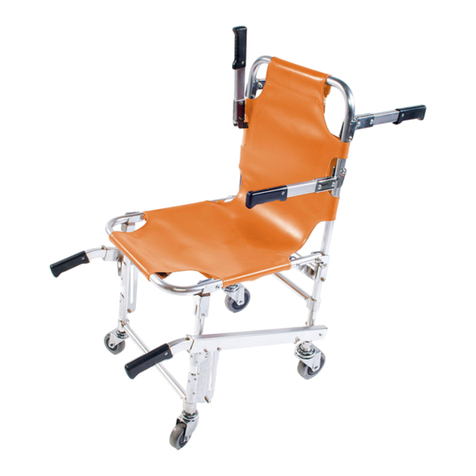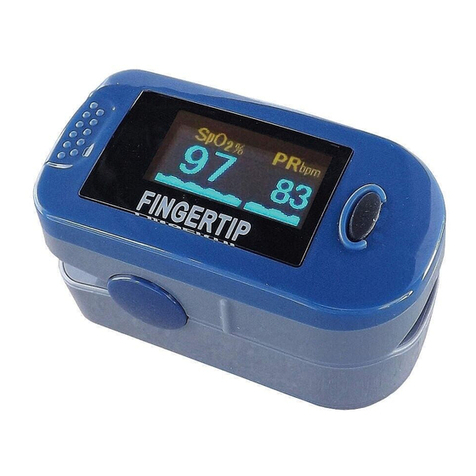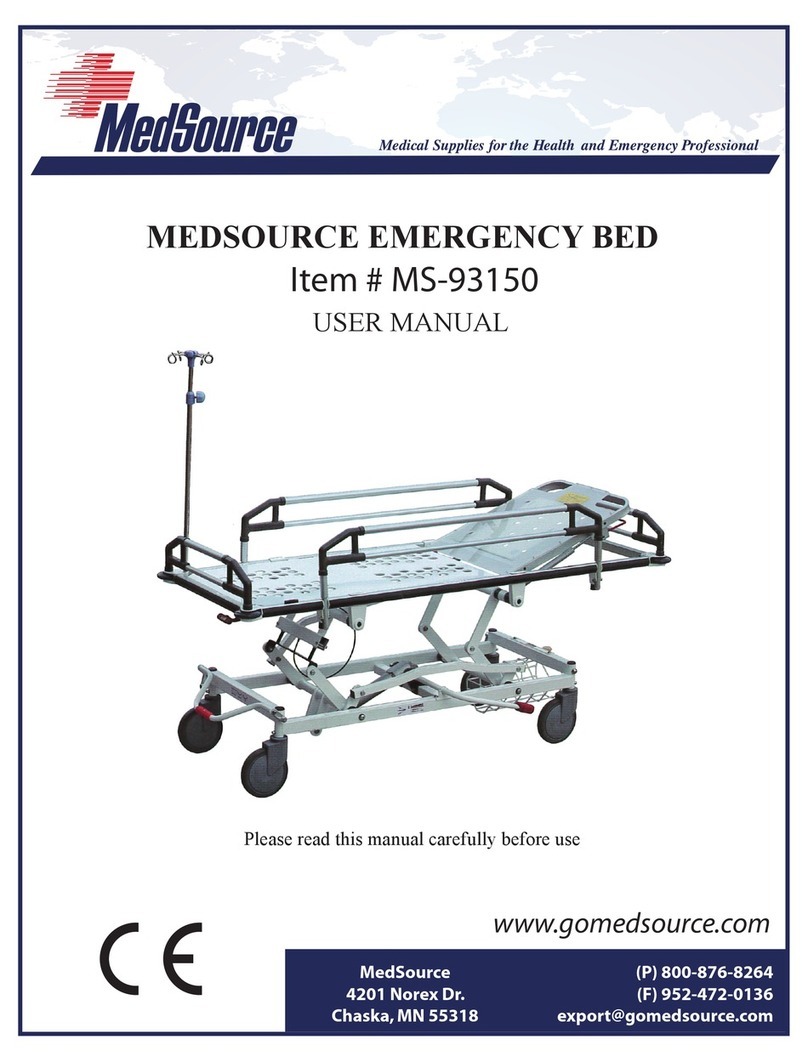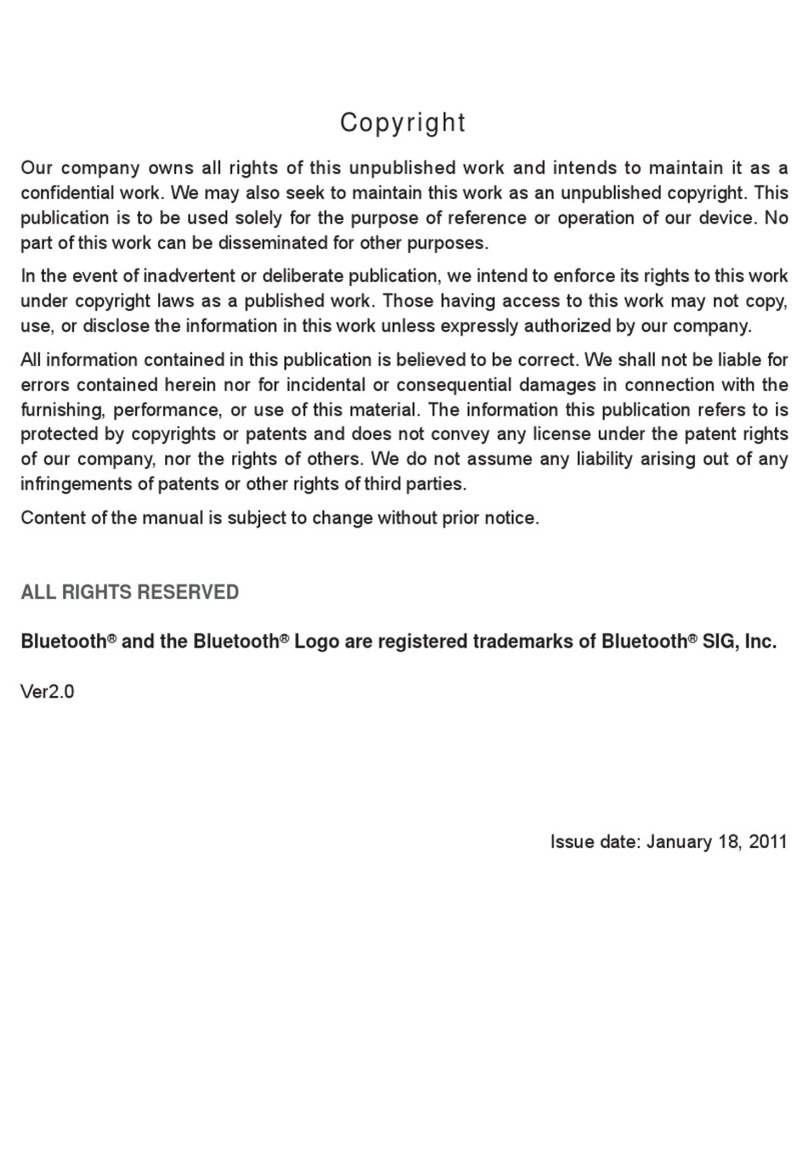
Using the Chair Features
Chair Lock
The chair lock automatically engages as the Stair Chair is completely unfolded.
It secures the chair in an open position.
Unfolding the Stair Chair
1. Stand at the side of the Stair Chair.
2. Position the Stair Chair on its wheels.
3. Grasp the frame at the seat and back.
4. Briskly push the seat and back of Stair Chair.
5. Continue to push apart until Stair Chair locks into place.
6. Conrm locking by visually checking that both sides of the lock
bar are engaged.
Folding the Stair Chair
1. Fold rear carrying handles down.
2. Retract from carrying handles.
3. Stand at one side of the Stair Chair.
4. Tilt Stair Chair forward onto front carrying handles.
5. Pull upward on center of lock bar to disengage lock.
6. Push frame down until Stair Chair is completely folded.
Rear Carrying Handles
To unfold the rear carrying handles for patient transport:
Grasp and pull upward on the handles.
To fold the handles down for storage:
Push the handle downward, towards the frame of the Stair Chair.
3.
3.1
3.2
3.3
3.4


























